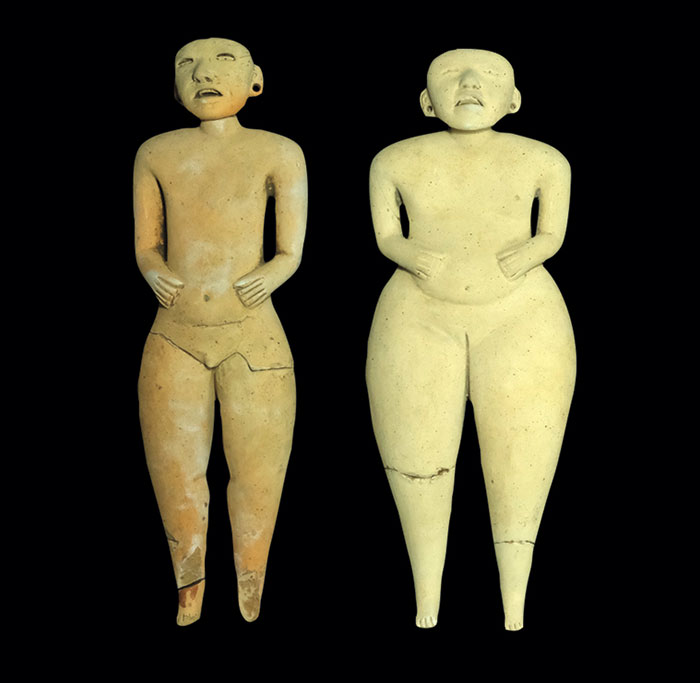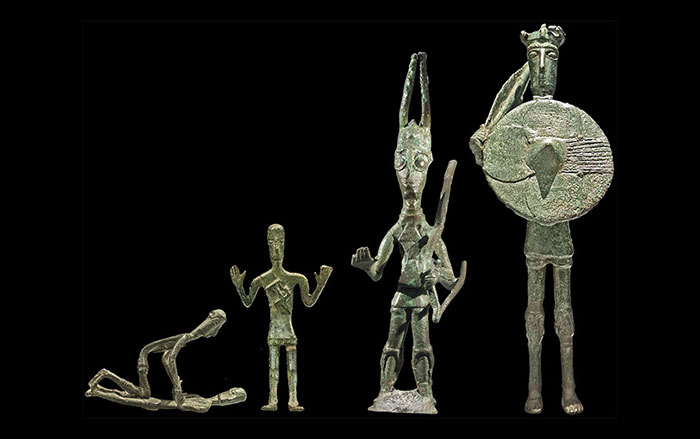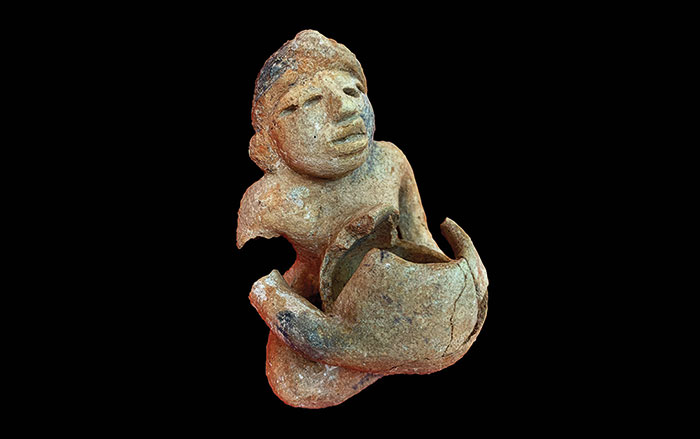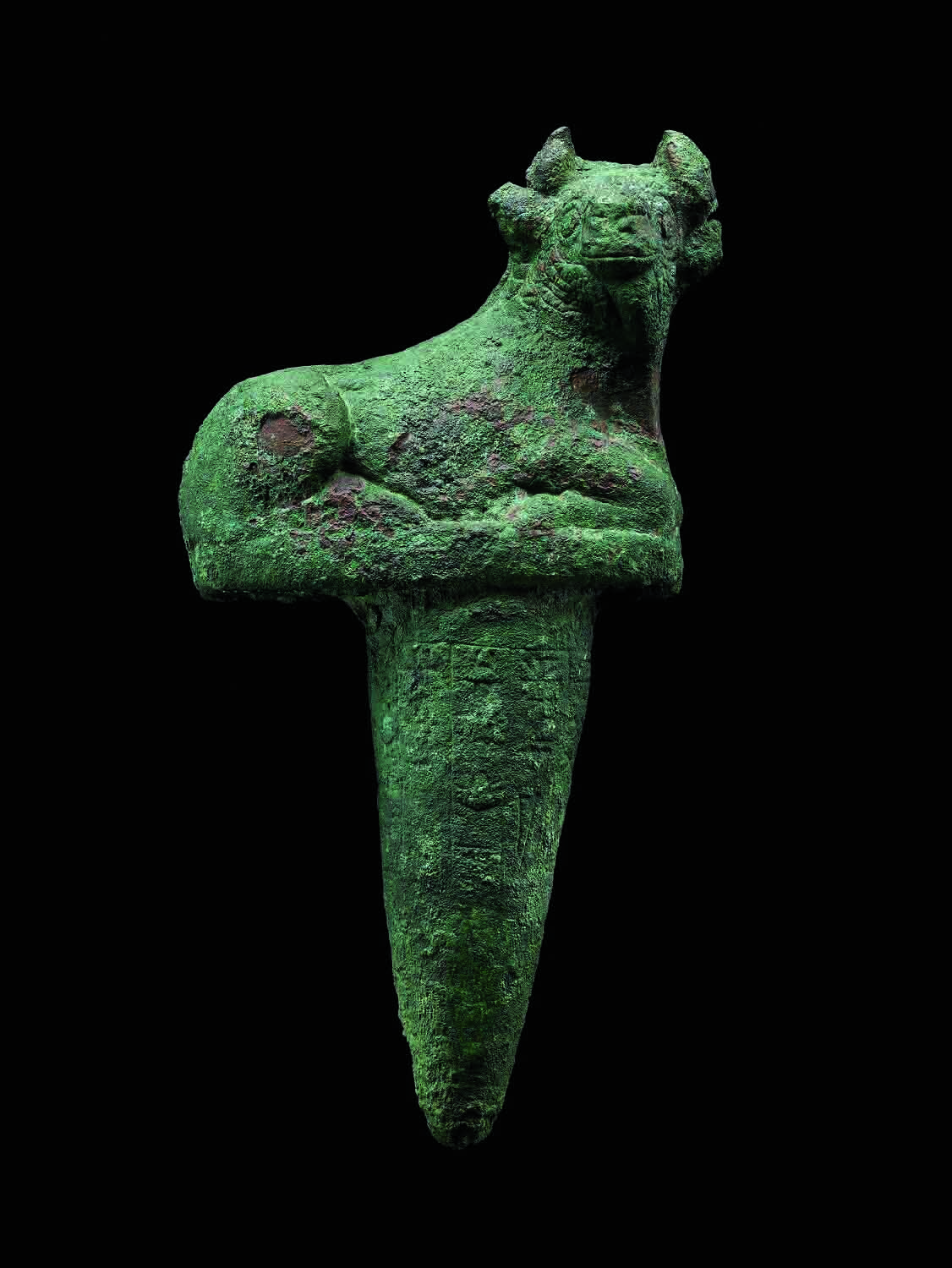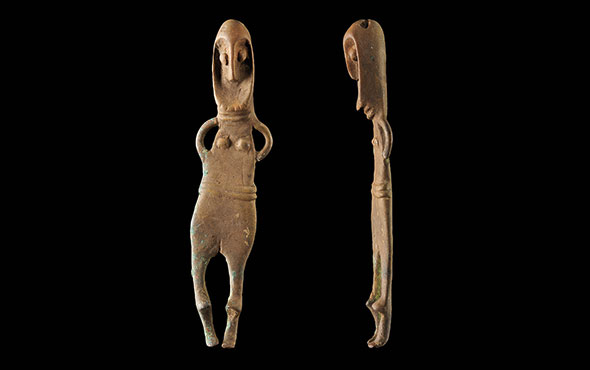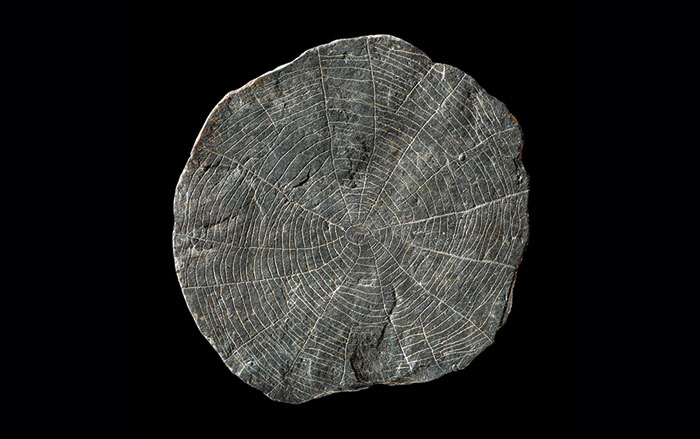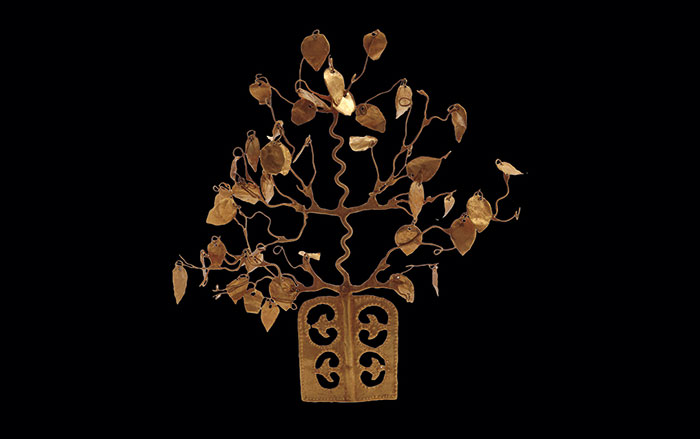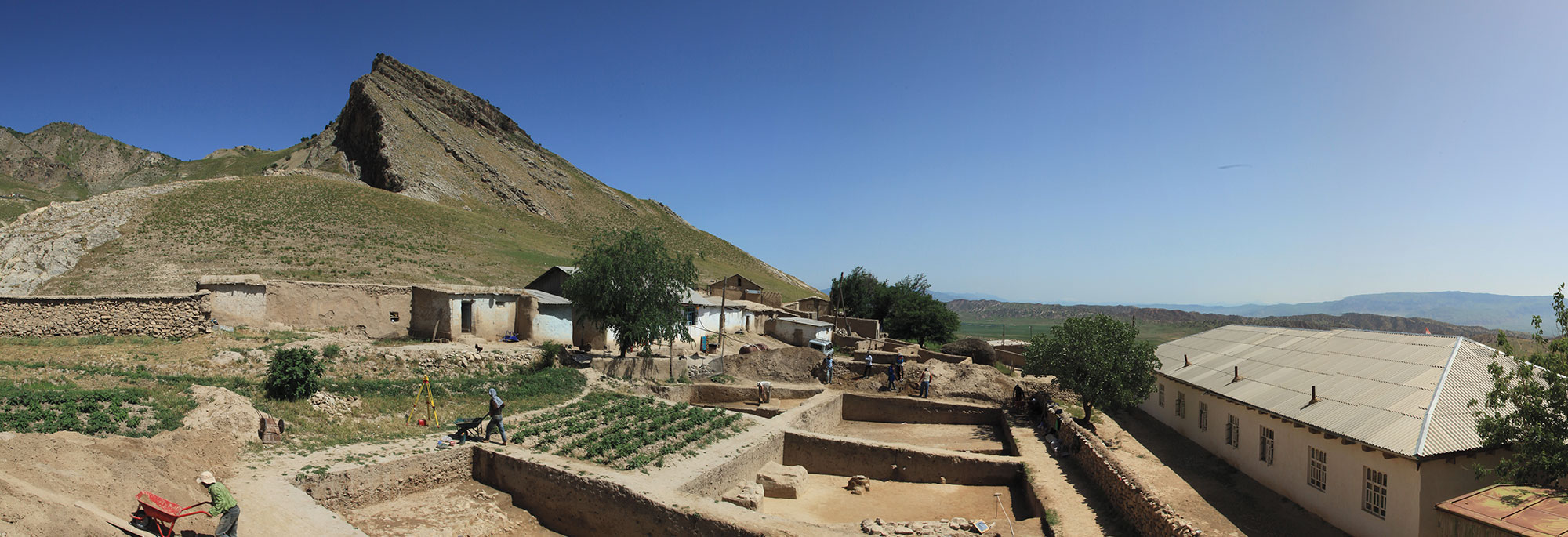Atop the tallest pyramid at the site of San Isidro in western El Salvador, archaeologists have unearthed five ceramic figurines dating to around 400 b.c. Each figurine has an evocative facial expression that appears to shift depending on the angle from which it’s viewed. Four depict women, and the fifth portrays a man, whose face is incised with lines that may represent tattoos or scarification. “Given their meticulous craftsmanship, I’m pretty certain they were made for some ritual purpose,” says archaeologist Jan Szymański of the University of Warsaw, “though the nature of those rituals is more difficult to guess.” The figures’ mouths are open, suggesting that they may be singing or speaking. One of the smaller figurines measures four inches tall, the other, seven. The three larger figurines are just under a foot tall. Their heads are not connected to their bodies and have holes through which a string could be threaded to control their movements.
In 2012, a similar set of figurines was uncovered at the site of Takalik Abaj, in southern Guatemala, atop a large structure near a lavish set of grave goods. This suggests that these figurines were used in a burial ritual. (See “Tomb of the Vulture Lord.”) At San Isidro, archaeologists assiduously searched for evidence of a burial but found none. The figurines were discovered at a level dated to a time when the pyramid was enlarged, and thus could have played a role in a ritual to mark the completion of this construction project.




